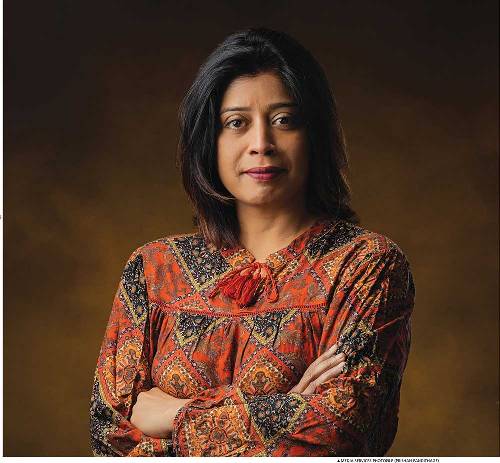 UNITED NATIONS, Mar 19, 2012 (IPS) – China, India and South Korea – three of the most vibrant economies in Asia – are also beefing up their military arsenals with new weapons systems from the United States, Russia, Germany, France and UK.
UNITED NATIONS, Mar 19, 2012 (IPS) – China, India and South Korea – three of the most vibrant economies in Asia – are also beefing up their military arsenals with new weapons systems from the United States, Russia, Germany, France and UK.
According to the latest figures released Monday by the Stockholm International Peace Research Institute (SIPRI), the world's five largest arms importers in 2007-2011 were all Asian states beating out the traditional frontrunners – the rich, oil-blessed Middle Eastern countries.
India was the world's single largest recipient of arms, accounting for 10 percent of global arms imports, followed by South Korea (six percent of arms transfers), Pakistan (five percent), China (five percent) and Singapore (four percent).
The five biggest arms suppliers in 2007-2011 were the United States, Russia, Germany, France and the UK.
With the exception of Germany, the four other suppliers are veto- wielding permanent members of the U.N. Security Council. The top five suppliers accounted for 75 percent of all international arms transfers.
Still, the most significant purchase in 2011, and the largest arms deal for at least two decades, was Saudi Arabia's order for 84 new and 70 rebuilt F-15SG fighter planes from the United States.
Pieter Wezeman, a senior researcher with the SIPRI's Arms Transfers Programme, says that major Asian importing states are seeking to develop their own arms industries and decrease their reliance on external sources of supply.
A large share of arms deliveries, he said, is due to licensed production of weapons spawning domestic industries.
Asked if he expects any of the Asian countries to reach self- sufficiency in arms in the near future, Wezeman told IPS: "The answer is no."
The goal of total independence from imports of weapons or key major components seems very unlikely to be achievable, he said.
Even the United States – with by far the largest arms industry and the highest military research and development (R&D) budget – is importing major weapons, sometimes because that is more convenient than domestic production, but in some cases because the technology is not available in the U.S., he pointed out.
Considering that the development of major weapons such as combat aircraft or missile systems has become more and more costly – in real terms – above the inflation rate – most countries cannot afford to develop the full scale of weapons and other military technologies on their own, he added.
While some may choose to fully develop for example their own combat aircraft or submarines, they will still remain dependent on imports of other weapons.
Wezeman said India is a good example of how difficult it is to increase self-sufficiency. For decades, the aim of successive Indian governments has been to be able to produce 70 percent of the military equipment that India needs locally, instead of the 30 percent level that India achieved decades ago.
Despite that expressed aim, and despite having established a larger military R&D sector, India is today not much nearer the 70 percent self-suffiency mark than it was decades ago.
He said other Asian countries, like Japan, South Korea and China, have been more successful in increasing indigenous development and production, but all three are still dependent on imports of complete weapons or of key components.
According to the SIPRI study, China, which was the largest recipient of arms exports in 2002-2006, fell to fourth place in 2007-2011.
The decline in the volume of Chinese imports coincides with the improvements in China's arms industry and rising arms exports. Between 2002-2006 and 2007-2011, the volume of Chinese arms exports increased by 95 percent.
China now ranks as the sixth largest supplier of arms in the world, narrowly trailing the United Kingdom.
While the volume of China's arms exports is increasing, this is largely a result of Pakistan importing more arms from China, says Paul Holtom, director of the SIPRI Arms Transfers Programme.
Besides Pakistan, China has not yet achieved a major breakthrough in any other significant market.
Meanwhile, despite significant progress in its arms industry, China continues to rely on the import of engines from Russia for its fighter planes, and other key components and designs from Russia, France, Switzerland, the UK, Ukraine and Germany.
Asked about the increase in licensed production of weapons, Wezeman told IPS there are many examples in Asia.
India produces T-90S tanks, Su-30MKI combat aircraft and anti-tank missiles under Russian licenses; Scorpene submarines under a French license; Jaguar combat aircraft and Hawk trainer aircraft under a British license; and naval radars under Dutch licenses.
Pakistan produces JF-17 combat aircraft and MBT-2000 tanks under Chinese licenses and RBS-70 surface-to-air missiles and MFI-17 trainer aircraft (as Mushshak and Super Mushshak) under Swedish licenses.
South Korea produces Type-214 submarines under a German license, and Vietnam produces Project-12418 (or Tarantul-5) fast attack craft under a Russian license.
These, Wezeman pointed out, are just some examples from a long list of cases where the final production of weapons purchased from abroad takes place in the country that has bought them.
According to SIPRI, although the volume of arms deliveries to Middle Eastern countries decreased by eight percent between 2002-2006 and 2007-2011, "there are signs that this trend will soon be reversed."
Post Disclaimer | Support Us
Support Us
The sailanmuslim.com web site entirely supported by individual donors and well wishers. If you regularly visit this site and wish to show your appreciation, or if you wish to see further development of sailanmuslim.com, please donate us
IMPORTANT : All content hosted on sailanmuslim.com is solely for non-commercial purposes and with the permission of original copyright holders. Any other use of the hosted content, such as for financial gain, requires express approval from the copyright owners.
 Sri lanka Muslims Web Portal Sri Lanka Muslims News Center
Sri lanka Muslims Web Portal Sri Lanka Muslims News Center
 Donate
Donate


